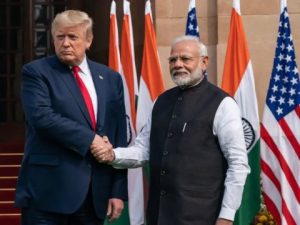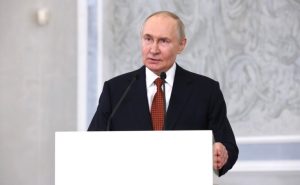G7 steps on China’s tail with prayers

Photo credit twitter Japan PM office
By Manish Anand
New Delhi, May 20: For those who expected G7 to firm up a united stand on China and its duplicity in the rules-based global order, the Hiroshima Summit of the seven most industrialized nations gave disappointments. The G7 is showing signs that the constituents have sized up the dragon play for hegemony at risk of rules-based order, but hands are shaking of the member nations to decisively crackdown on China.
The joint communique of the G7 is at best incrementalist in admitting the Chinese threat. It adds a few paragraphs from previous years, but refuses to cross the bridge of equivocation, which is being exploited by Beijing to maximize its economic and diplomatic gains.
The G7 added new elements to admit the Chinese threat to the rules-based global order, which principally was underpinned by an admission to foster resilience to economic coercion. “Protect certain advanced technology that could be used to threaten G7 national security without unduly limiting trade and investment,” noted the statement of the group from its Hiroshima Summit.
It may be noted that the US has banned sourcing of high-tech chips from foreign countries, especially those required by the Pentagon. Also, Europe is growing worried at the near hegemony of China in technology and resources such as lithium for electric vehicles.
The G7 specially named China, urging Beijing “not to conduct interference activities aimed at undermining the security and safety of our communities, the integrity of our democratic institutions and our economic prosperity”.
The unmistakable takeaway from the G7 communique is the tone and tenor of the grouping to cajole China to not harm the interests of the member countries. This is well-understood in the light of Germany and France breaking ranks with the western nations to fete Chinse President Xi Jinping upon usurping the third term in the office, much against the norm within the Communist nation.
The G7 has given a concession to the US by mentioning in the joint communique that Taiwan is not a domestic issue for China, echoing the Washington line and discarding Emmanuel Macron’s argument for aloofness from the turbulence in the waters of the Taiwanese straits.
On east and South China Sea, the G7 has struck previous stance, calling for the rules-based order and free access to all in the international waters. Significant is the resolve of the G7 to ward off Chinese influence in the big technology, which may see a reset in the way funds flow for research and development and the subsequent manufacturing capacity.
The group also sought to co-opt the Global South to put pressure on China by lending weight to the issue of growing debt burden of the developing and poor countries in South Asia, Africa and Latin America.






